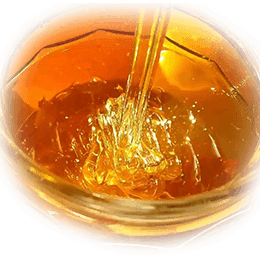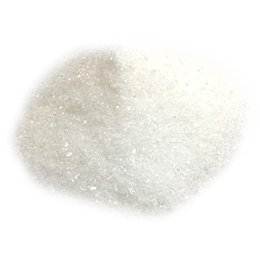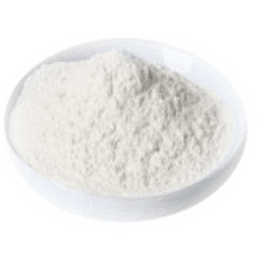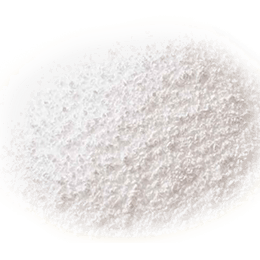Sweeteners and Flavoring

1- Glucose syrup
Explanation:Glucose Syrup is obtained from starch-source grains such as corn, potatoes, wheat, barley and rice. Glucose Syrup is produced by the two-step enzymatic hydrolysis of starch. It contains sugar and other carbohydrates. Glucose is a sugar. It has a similar structure to table sugar. Glucose Syrup is used to reduce the total amount of sugar in foods, as well as soften the texture and add volume. It is also preferred due to its moisture retention and fermentation properties. However, if we consider that glucose syrup also has sugar intake, as with every food, it is necessary to pay attention to the intake of sugar in the recommended amounts in a sufficient and balanced diet.
Usage areas: Glucose Syrup, bakery products such as acidic-carbonated drinks, instant fruit juices, chocolate, wafers and bars, confectionery, packaged and instant cakes, cookies, biscuits, jam, marmalade, breakfast cream chocolates, halva, ice cream, biscuits in the production of all desserts with syrup. It is used in confectionery and processed ready-to-eat foods. It is used in each product due to its different properties. Since it prevents crystallization in jams and marmalades, it is used to add consistency and to provide balance in taste. In addition, it prevents the development of yeast with the osmotic pressure it creates and prevents spoilage. It is added to confectionery as it prevents color formation, sweetness, moisture balance, consistency and crystallization. It is a source of carbohydrate fermented by yeast in the production of bakery products. High sugars formed as a result of fermentation provide uniformity and softness to the product, while reducing sugars give the crust its brown color. It increases the effectiveness of the albumin or gelatin found in egg whites in products such as cakes. Thanks to the moisture it provides, it prevents drying and thus extends its shelf life. It prevents the moisture loss of the fruit in fruit pies. It extends the shelf life of the biscuits with its antioxidant effect, preserves the crispness of the biscuit, accelerates the formation of color, and adds flavor and sweetness. It balances the taste and total sweetness in frozen desserts, prevents crystallization, increases the total solid matter, and leads to a natural taste perception for the consumer. It is used to balance consistency and sweetness in alcoholic beverages such as beer and for its effect on color formation.
2- Sodium Saccharin Product Code : E 954
Explanation : Sodium Saccharin is a solid artificial sweetener known as saccharin. Sodium Saccharin is a calorie-free sweetener that does not have any nutritional value. It is a product soluble in water, alcohol, ether, glycerin and acetone. It has a white, transparent, powder and crystal structure. Sodium Saccharin is 350 times sweeter than sugar compared to other sweeteners. It has ideal properties for use as a sweetener. It is extremely stable in all conditions that food may be exposed to. It is used in detail in the production stages of food consumption.
Usage areas:Sodium Saccharin, tablet type sweeteners, diet products, soft drinks, instant drinks, iced tea, dairy products, jam, marmalade products, confectionery products, chewing gum, box fruit, ice cream, pickles, sauce, multivitamin, pudding, jelly, chocolate, bakery Used in products, canned food. It is also used in toothpaste and mouthwash and pharmaceutical products. Sodium Saccharin, which has the feature of being an effective sweetener on many products, is always in a top-class position in the food sector in a wide range of uses.


3- Acesulfame K Product Code : E 950
Explanation: Acesulfame K is a low-calorie, odorless white crystalline sweetener that has been used since 1988. It is an organic synthetic salt. It is 200 times sweeter than sucrose. It has a synergistic effect and a durable shelf life with other sweeteners. It is resistant to heat, it does not change when heated, so it is also widely used in baked or cooked foods. It acts by stimulating the taste receptors on the tongue. Thus, it offers the opportunity to taste much more without taking calories from many foods and beverages. It is excreted unchanged in the human digestive system and therefore does not provide calories.
Usage areas : Acesulfame K is used in diet products, chewing gums, sweets, dairy products, ice cream, cake mixes, biscuits, jams, marmalades, confectionery, pickles, corn flakes, salad dressings and spices, powder mixes, fruit soda and fruit juice. It is also used in toothpastes and mouthwashes.
4- Aspartame Product Code : E 951
Explanation :Aspartame is made by combining the amino acids aspartic acid and phenylalanine. Amino acids are the building blocks of proteins and are found naturally in all protein foods, including meats, grains, and dairy products. It is 180 times sweeter than tea sugar. Therefore, a very small amount is sufficient to add flavor to food and drink. It also does not increase the calories of added foods, as it is known as neutral sugar. Since its structure changes when heated, it is used in foods that do not require heat. Aspartame is widely used in the sugar-free market as an important ingredient in many low-calorie, unsweetened foods and beverages.
Usage areas: All over the world, cereals, carbonated sodas, beverage powders, bubble gums, mint breath openers, pre-sweetened tea and coffee, milk yogurt ice cream mixes, hot cocoa mixes, dry mixes such as pudding and jelly, dried products, chewable vitamins and tablet type Used as a sugar substitute in thousands of foods, including sweeteners.


5- Sodium Cyclamate Product Code : E 952
Explanation : Sodium Cyclamate is an artificial sweetener. It is white, odorless and crystalline. It is water soluble and low in calories. Sodium Cyclamate is 30-50 times sweeter (depending on concentration) than sugar. This feature has expanded its usage area. It is generally put on the market by mixing it with Saccharin at a ratio of 10/1 as it has a synergistic effect with Saccharin. In addition, Sodium Cyclamate can be used with other sweeteners. It can remain stable when heated.
Usage Areas : It is used in carbonated and non-carbonated soft drinks, bakery products, desserts, food supplements, diabetic and low-calorie products, tablet-type sweeteners, dairy products, chewing gum, jam and marmalade, chocolate and confectionery products, pharmacy, toothpaste, cosmetic products.
6- Sucralose Product Code : E 952
Explanation : Sucralose is a zero calorie artificial sweetener. It is one of the most consumed sweeteners commercially. It is chemically produced from sugar as a result of multi-step chemical processes in which 3 hydrogen-oxygen groups are exchanged with chlorine atoms. This sweetener is 400 to 700 times sweeter than the table sugar we use. It does not leave a bitter aftertaste like other sweeteners. Because it is very sweet, it is often mixed with other non-calorie sweetening ingredients to dilute its intense sweetness. It is resistant to heat, its structure does not deteriorate in all kinds of heat treatment. It is known as the sweetener closest to sugar in taste.
Usage areas : Because it has no bitter taste, Sucralose is used in a wide variety of low-calorie foods, including sweeteners, sodas, chewing gum, baking mixes, breakfast cereals, and salad dressings. Sucralose and water and its mix are used in canned fruit.


7- Sorbitol Product Code: E420
Explanation : Sorbitol is a sweetener chemically extracted from glucose. Sorbitol is obtained by saturating the dextrose with hydrogen in the presence of Raney nickel or ruthenium catalyst at high pressure and high temperature. It has low calorie and bulking properties. Sorbitol, similar in appearance to table sugar, has 30% fewer calories than regular sugar. It is known as tooth-friendly since it does not cause plate formation in the teeth. Since its dissolution enthalpy is exothermic, it gives a feeling of freshness in the mouth.
Usage areas : Sorbitol is used to retain moisture, add sweetness, provide texture to products, as well as potentially support digestive and oral health. It is used in baked goods, chewing gums, candies, chewable vitamins, chocolates, cough lozenges and syrups, beverages, ice cream, mouthwashes, puddings, toothpastes, mouth sprays.
